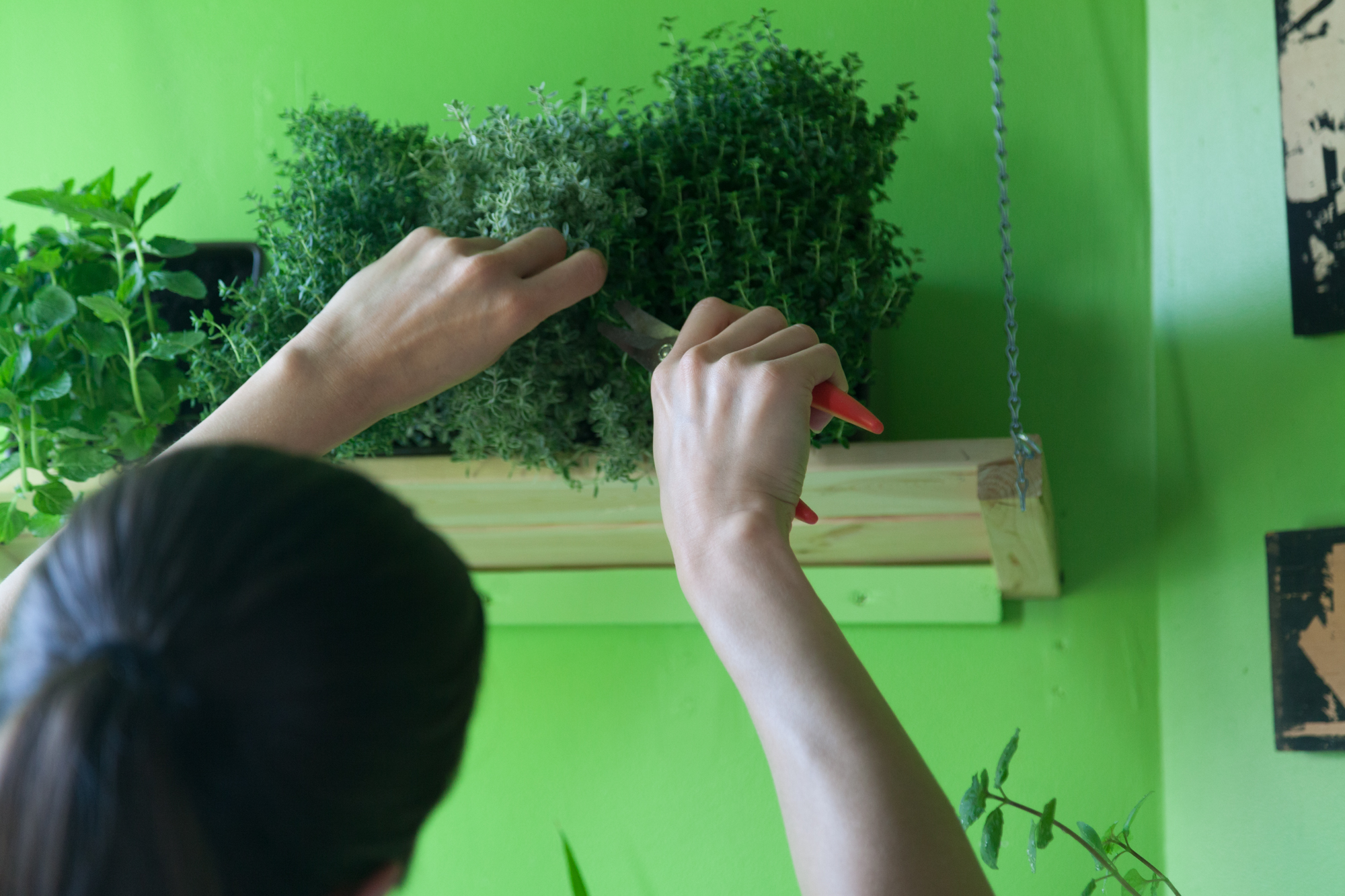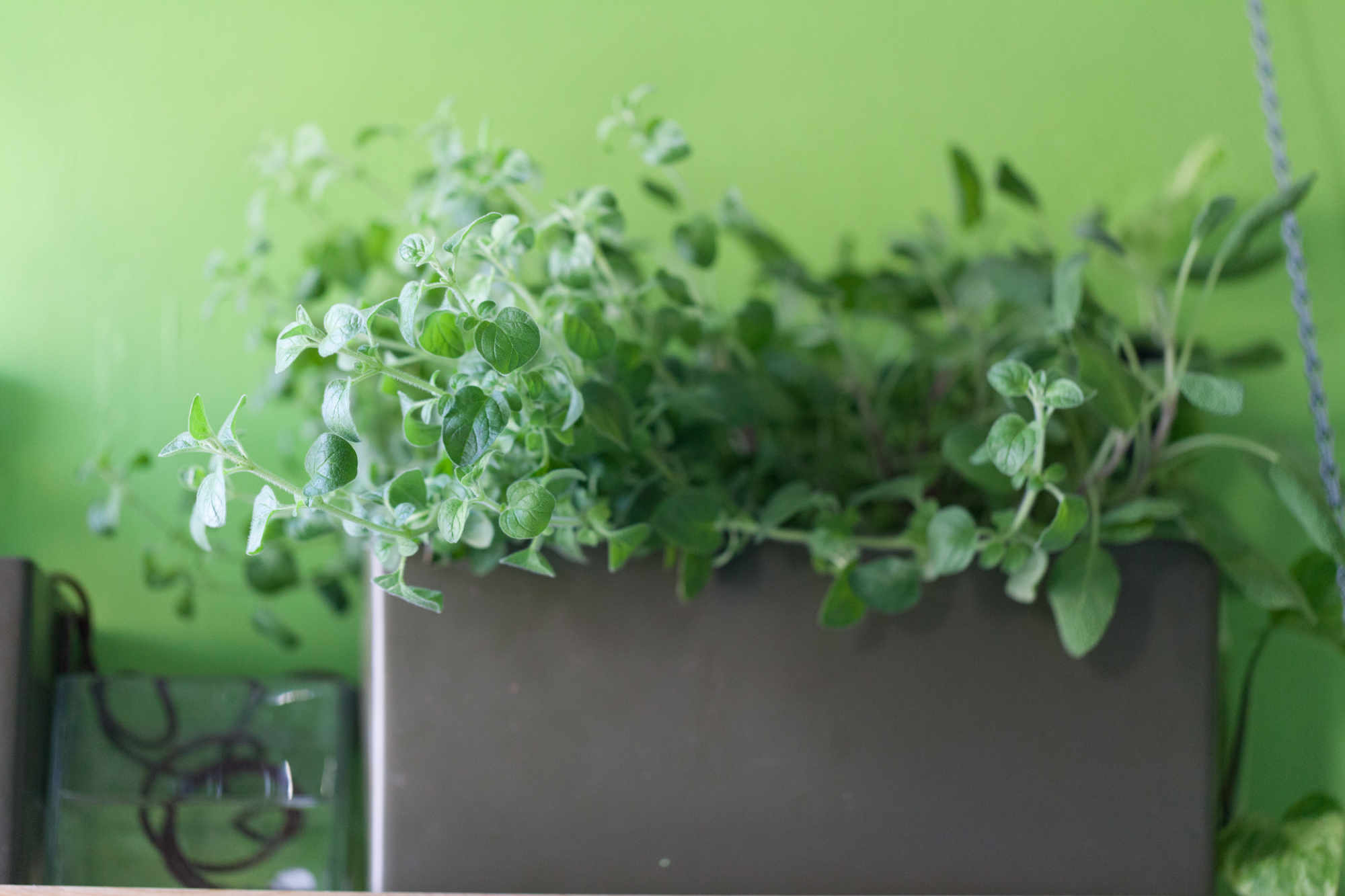Growing herbs in the city can be challenging, especially if you don't have a backyard, but don't let that hinder you from getting your green on! Who needs a backyard anyway when you have fire escapes, balconies, south-facing windows, and even grow lights?
I've always had a strong desire to grow food indoors, which was perhaps partially spurred by my father's encouragement after installing my vertical garden in my bedroom. Additionally, I'm a prolific home cook. I try to cook at least two meals a day—and with one cookbook under my belt, I always seem to be experimenting with new recipes, which often involve some herb or spice.
As you'll see from my visual herb diary below, there are plenty of ways to keep your herbs happy indoors throughout the year. Of course, you may wind up like me, often using so much that you have to replenish your stocks, but that shouldn't be a worry at all.
The first thing you should know about herbs is that they need a lot of light. I have my herbs in three places in my house. The first is in a south-facing window, which gets substantial amounts of light throughout the day. The second is in my "closet garden", which has some southern exposure as well as LED grow lights. And the final is in my north-facing window near or on my countertop. Since the northern exposure gets less light than the south-facing window, I also have installed mirrors along my windows, so that it reflects more light into the space for my plants.
Additionally, different herbs have different watering requirements, so it's often sensible to grow herb types in separate pots—or to grow herbs that have the same requirements in the same pot. For instance, I had been growing oregano (Origanum vulgare) and sage (Salvia officinalis) in the same pot, and even though they are both fairly drought tolerant, my oregano seemed to want more water than its herb counterpart, which eventually led to my Salvia being far less happy with its soil conditions. Instead, I should have opted for planting rosemary (Rosmarinus officinalis) with the sage (Salvia officinalis); and perhaps oregano (Origanum vulgare) with thyme (Thymus vulgaris).
If you want to clone your herbs, then take a cutting and place it in a fresh glass of water in the window. Change the water frequently so you oxygenate the roots. Within a couple weeks, you'll start to see a root emerging. Once that root is about an inch long, you can likely pot it with some good all-purpose potting soil and some perlite or vermiculite. 🌿
Here I have spearmint (Mentha spicata) in s separate pot from my thyme (Thymus sp.) species. Mint often likes to spread wildly, so it's important to plant it in it's own separate pot, since it won't often co-mingle with other herbs.
I eventually hydrospiked my herbs, which is a way for them to water themselves. I found this to be highly effective, but my oregano (Origanum vulgare), pictured to the left, soon dictated that it wanted more water than the sage (Salvia officinalis), pictured to the right of the pot). I eventually had to remove the sage and repot it elsewhere in order to get the right watering regime.
I had gotten this African blue basil (Ocimum kilimandscharicum) years ago. It had been mislabeled as "Thai basil", which it clearly wasn't. It was one of my favorite plants, but eventually got infected with thrips. Since it's a sterile plant and only propagates by cuttings, I took three cuttings, two of which survived, and I brought in beneficial insects to take care of the thrips. This just goes to show you that plants are resilient, if you give them a helping hand.
Can you identify all the herbs growing here? I have Vick's plant, santolina, basil, and mint. I'm often growing at least a dozen different herbs at any given time, which is great for the home cook.
From top to bottom: rosemary, santolina, and Vick's plant. I often find that rosemary is often planted in too small of a pot, so it often needs repotting in a pot twice the size. It's a vigorous grower and doesn't mind some neglect!
To propagate my herbs, I often snip one below a node, removing the bottom leaves and stick in water. Pretty soon you'll have a root, which you can repot in potting soil.
Oftentimes you can ask friends for cuttings of their herb varieties, since cuttings are so easy to root. This is a rosy basil with beautiful mottling that I got from Farm One, a hydroponic grower specializing in rare herbs.
Red shiso (Perilla frutescens) is another interesting herb, which has a noticeable cinnamon or clove flavor, with a little hint of cumin. It's popular in Asian cooking.
My purple ruffles basil (Ocimum basilicum) threw out quite the substantial root, after sitting in a cup of water. It was clearly time to pot it.
I have a couple hydroponic Amphora vases from Cloud Farms, which I like to grown cilantro and basil out of.











